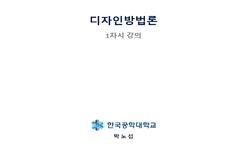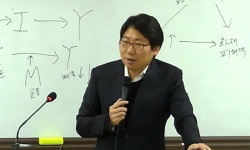A myriad of companies do culture-art marketing on the performance of their corporate social responsibility (CSR). As a result, culture-art marketing based on CSR has emerged as an inescapable priority for many companies. However, CSR programs focus m...
http://chineseinput.net/에서 pinyin(병음)방식으로 중국어를 변환할 수 있습니다.
변환된 중국어를 복사하여 사용하시면 됩니다.
- 中文 을 입력하시려면 zhongwen을 입력하시고 space를누르시면됩니다.
- 北京 을 입력하시려면 beijing을 입력하시고 space를 누르시면 됩니다.
https://www.riss.kr/link?id=T12923776
- 저자
-
발행사항
부산 : 신라대학교 일반대학원, 2012
-
학위논문사항
학위논문(박사) -- 신라대학교 일반대학원 , 문화예술경영학과 , 2012.8
-
발행연도
2012
-
작성언어
한국어
- 주제어
-
KDC
600.13 판사항(5)
-
발행국(도시)
부산
-
기타서명
A study on corporate culture-art marketing based on creating shared value(CSV)
-
형태사항
viii, 155 p. : 삽화, 표 ; 26 cm.
-
일반주기명
국문초록수록
부록: 실험유인물, 외 수록 - 소장기관
-
0
상세조회 -
0
다운로드
부가정보
다국어 초록 (Multilingual Abstract)
For the present study, the author approached three different methodologies. First, the present study conducted in-depth interviews with culture-art marketing managers, cultural art enterprisers, and professors to explore the direction of CSV. Using content analysis, the author extracted keyword and core phrase from the deposition of the interview, then, classified and categorized them according to the similarities of and differences in their meanings. Through these process, the current study drew six necessary conditions (e.g., ‘social investment’, ‘positioning’, ‘management’, ‘operation’, ‘involvement’, and ‘confidence building’) for CSV.
Second, through a series of exploratory and confirmatory factor analyses, the present study confirmed that the motivation of social philanthropy is a multidimensional construct, composed of several subordinate concepts.
Third, the present study adopted 3 x 2 factorial design and conducted an experiment to examine the main and interaction effects of social philanthropy on the evaluation of the firm. Specifically, this study classified three different social philanthropy group; the CSR group, the CSV group, and a control group as a neutrality. The multivariate analysis of variance(MANOVA) was used to assess the statistical significance of the effects of one or more independent variables on a set of two or more dependent variables. The results reveal that CSV appeared to have higher level of evaluation of firm from consumers than its counterparts (i.e., CSR group and control group).
Lastly, the present study analyzed the structural relationship between three motivations of social philanthropy (i.e., motivation for firm, customer, and social) and the evaluation of firm using structural equation modeling with the structural model invariance across the groups (i.e., CSR group, CSV group, and neutrality group). The current study found that both motivation for customer value and the motivation for social value positively influenced the evaluation of the firm image, while the motivation for firm value did not. This study also found that there was a group difference in how three motivations of social philanthropy influenced the evaluation of the firm image. Specifically, the present study found that the path from motivation for social value to the evaluation of the firm image was much stronger among CSV group than among CSR and neutrality group, and this difference was statistically significant.
In conclusion, the present study conducted several methodological approaches to inquire into CSV. The procedures of the study might suggest the methodological milestone for follow-up studies.
A myriad of companies do culture-art marketing on the performance of their corporate social responsibility (CSR). As a result, culture-art marketing based on CSR has emerged as an inescapable priority for many companies. However, CSR programs focus mostly on reputation and have only a limited connection to the business, making their maintenance hard to justify in the the long run. In contrast, creating shared value (CSV) is integral to a company's profitability and competitive position. It leverages the unique resources and expertise of the company to create economic value by creating social value. In this vein, the present study inquired into culture-art marketing based on CSV. The purposes of the present study are to (a) propose the direction of CSV and (b) examine the effects of CSV on a consumer.
For the present study, the author approached three different methodologies. First, the present study conducted in-depth interviews with culture-art marketing managers, cultural art enterprisers, and professors to explore the direction of CSV. Using content analysis, the author extracted keyword and core phrase from the deposition of the interview, then, classified and categorized them according to the similarities of and differences in their meanings. Through these process, the current study drew six necessary conditions (e.g., ‘social investment’, ‘positioning’, ‘management’, ‘operation’, ‘involvement’, and ‘confidence building’) for CSV.
Second, through a series of exploratory and confirmatory factor analyses, the present study confirmed that the motivation of social philanthropy is a multidimensional construct, composed of several subordinate concepts.
Third, the present study adopted 3 x 2 factorial design and conducted an experiment to examine the main and interaction effects of social philanthropy on the evaluation of the firm. Specifically, this study classified three different social philanthropy group; the CSR group, the CSV group, and a control group as a neutrality. The multivariate analysis of variance(MANOVA) was used to assess the statistical significance of the effects of one or more independent variables on a set of two or more dependent variables. The results reveal that CSV appeared to have higher level of evaluation of firm from consumers than its counterparts (i.e., CSR group and control group).
Lastly, the present study analyzed the structural relationship between three motivations of social philanthropy (i.e., motivation for firm, customer, and social) and the evaluation of firm using structural equation modeling with the structural model invariance across the groups (i.e., CSR group, CSV group, and neutrality group). The current study found that both motivation for customer value and the motivation for social value positively influenced the evaluation of the firm image, while the motivation for firm value did not. This study also found that there was a group difference in how three motivations of social philanthropy influenced the evaluation of the firm image. Specifically, the present study found that the path from motivation for social value to the evaluation of the firm image was much stronger among CSV group than among CSR and neutrality group, and this difference was statistically significant.
In conclusion, the present study conducted several methodological approaches to inquire into CSV. The procedures of the study might suggest the methodological milestone for follow-up studies.
국문 초록 (Abstract)
둘째, CSR과 CSV는 소비자의 기업 이미지 평가에 어떠한 차이가 있는지를 고찰하기 위해 실험연구를 수행하였다. 요인설계(factorial design)를 이용하여 CSV에 바탕을 둔 기업들의 사회공헌활동 중 어떠한 유형이 피험자들에게 긍정적 효과를 보이는지를 다변량분석을 통해 검증하였다. 분석의 결과, 사회공헌 유형 따라 기업의 사회공헌 이미지는 통계적으로 유의미하게 차이를 보였다. 이를 통해 CSV에 바탕을 둔 사회공헌이 소비자들에게 기업 이미지 평가에 있어 긍정적인 작용을 한다는 것을 알 수 있다.
셋째, 기업의 사회공헌 동기 유형에 따라 소비자가 인식하는 기업의 평가는 어떻게 달라질 것인지를 구조방정식모형을 이용한 집단 간 비교(test of the structural model invariance across the groups)를 통하여 검증하였다. 분석의 결과, 중립 집단이나 CSR 집단에 비해 CSV 집단에서 고객 가치 동기가 기업 이미지에 미치는 영향력이 큰 것을 알 수 있었다. 반면, 사회 가치 동기가 기업 이미지에 미치는 영향은 CSV 집단에서만 통계적으로 유의미하였다.
넷째, 본 연구에서는 인터뷰를 통한 탐색적 접근(exploratory approach)을 통해 ‘CSV에 바탕을 둔 기업의 문화예술 지원 방안’에 대해 알아보았다. 이를 위해 본 연구에서는 기업의 문화예술 지원 및 마케팅 담당자 그리고 문화예술 관련 전문가와의 심층인터뷰를 통한 질적 연구(내용분석, 의미 연결망 분석)를 수행하였다. 인터뷰 내용에 대한 핵심 어휘․어구의 계열화와 범주화를 통해, 본 연구에서는 CSV에 바탕을 둔 문화예술마케팅을 위한 6개의 핵심 조건(‘사회적 투자’, ‘사업선정’, ‘조직관리’, ‘실행관리’, ‘참여’, ‘신뢰구축’)을 도출할 수 있었다. 실제 위의 6가지 조건은 다양한 기업들이 사회공헌 활동의 방안으로 수행하고 있는 전략이다.
본 연구는 CSV에 바탕을 둔 문화마케팅을 위한 방안을 제시하기 위해 다양한 방법론적 접근을 수행하였다. 질적 연구와 양적 연구를 병행함은 물론, 분석에 있어서도 전통적인 기법(내용분석, 다변량분석)과 최신의 기법(의미 연결망 분석, 구조방정식모형)을 적절히 이용하였다. 이를 통해 본 연구는 후속 연구들을 위한 다양한 방법론적 이정표를 제시하였다는 의의가 있다.
현재 대부분의 기업에서 시행하는 문화예술마케팅은 ‘기업의 사회적 책임(corporate social responsibility: CSR)’이라는 맥락에서 시행된다. 하지만 CSR은 단기적 프로그램에 집중하여 기업의 평판...
현재 대부분의 기업에서 시행하는 문화예술마케팅은 ‘기업의 사회적 책임(corporate social responsibility: CSR)’이라는 맥락에서 시행된다. 하지만 CSR은 단기적 프로그램에 집중하여 기업의 평판을 관리하기 위한 목적성을 지녔다는 한계를 지니고 있다. 이에 본 연구에서는 CSR 보다 발전된 개념인 ‘공유가치창출(creating shared value: CSV)’을 통해 기업의 문화예술 활동에 대해 고찰하고자 한다. 구체적으로 본 연구에서는 사회공헌활동으로서 CSV에 바탕을 둔 기업의 문화예술마케팅의 방향을 제시하고, 수용자 연구를 통해 CSV를 통한 기업의 문화예술마케팅이 어떠한 효과를 지니는지를 분석하였다. 이를 위해 본 연구에서는 실험과 설문을 통해 CSV에 대한 수용자의 인식을 고찰한 후, 이러한 내용을 바탕으로 인터뷰를 통해 CSV에 바탕을 둔 기업의 문화예술마케팅의 방안을 탐색하였다. 구체적으로 이를 정리하면 다음과 같다. 첫째, 본 연구에서는 기업의 사회공헌 동기를 여러 개의 하위 유형들로 구성된 개념적 구성체(construct)로 판단 후, 이를 검증하였다. 탐색적 요인분석과 확인적 요인분석을 통해 사회공헌 동기는 여러 개의 하위 유형들로 구성된 개념적 구성체(construct)임을 확인하였다.
둘째, CSR과 CSV는 소비자의 기업 이미지 평가에 어떠한 차이가 있는지를 고찰하기 위해 실험연구를 수행하였다. 요인설계(factorial design)를 이용하여 CSV에 바탕을 둔 기업들의 사회공헌활동 중 어떠한 유형이 피험자들에게 긍정적 효과를 보이는지를 다변량분석을 통해 검증하였다. 분석의 결과, 사회공헌 유형 따라 기업의 사회공헌 이미지는 통계적으로 유의미하게 차이를 보였다. 이를 통해 CSV에 바탕을 둔 사회공헌이 소비자들에게 기업 이미지 평가에 있어 긍정적인 작용을 한다는 것을 알 수 있다.
셋째, 기업의 사회공헌 동기 유형에 따라 소비자가 인식하는 기업의 평가는 어떻게 달라질 것인지를 구조방정식모형을 이용한 집단 간 비교(test of the structural model invariance across the groups)를 통하여 검증하였다. 분석의 결과, 중립 집단이나 CSR 집단에 비해 CSV 집단에서 고객 가치 동기가 기업 이미지에 미치는 영향력이 큰 것을 알 수 있었다. 반면, 사회 가치 동기가 기업 이미지에 미치는 영향은 CSV 집단에서만 통계적으로 유의미하였다.
넷째, 본 연구에서는 인터뷰를 통한 탐색적 접근(exploratory approach)을 통해 ‘CSV에 바탕을 둔 기업의 문화예술 지원 방안’에 대해 알아보았다. 이를 위해 본 연구에서는 기업의 문화예술 지원 및 마케팅 담당자 그리고 문화예술 관련 전문가와의 심층인터뷰를 통한 질적 연구(내용분석, 의미 연결망 분석)를 수행하였다. 인터뷰 내용에 대한 핵심 어휘․어구의 계열화와 범주화를 통해, 본 연구에서는 CSV에 바탕을 둔 문화예술마케팅을 위한 6개의 핵심 조건(‘사회적 투자’, ‘사업선정’, ‘조직관리’, ‘실행관리’, ‘참여’, ‘신뢰구축’)을 도출할 수 있었다. 실제 위의 6가지 조건은 다양한 기업들이 사회공헌 활동의 방안으로 수행하고 있는 전략이다.
본 연구는 CSV에 바탕을 둔 문화마케팅을 위한 방안을 제시하기 위해 다양한 방법론적 접근을 수행하였다. 질적 연구와 양적 연구를 병행함은 물론, 분석에 있어서도 전통적인 기법(내용분석, 다변량분석)과 최신의 기법(의미 연결망 분석, 구조방정식모형)을 적절히 이용하였다. 이를 통해 본 연구는 후속 연구들을 위한 다양한 방법론적 이정표를 제시하였다는 의의가 있다.
목차 (Table of Contents)
- 제1장 서론 1
- 제1절 연구의 배경 1
- 제2절 연구의 목적 4
- 제3절 연구의 방법 6
- 제4절 논문의 구성 6
- 제1장 서론 1
- 제1절 연구의 배경 1
- 제2절 연구의 목적 4
- 제3절 연구의 방법 6
- 제4절 논문의 구성 6
- 제2장 연구모형 8
- 제1절 이론적 논의 8
- 1. 문화예술마케팅 8
- 1) 문화예술상품 8
- 2) 문화예술 지원 9
- 3) 문화예술 지원의 마케팅적 가치 14
- 4) 문화예술마케팅의 유형 15
- 2. 기업의 사회공헌활동 19
- 1) 기업의 사회적 책임(corporate social responsibility: CSR) 19
- 2) 공유가치창출(creating shared value: CSV) 32
- 제2절 가설의 도출 43
- 1. 연구 문제 43
- 2. 연구 가설 및 연구 모형 45
- 제3장 실험 및 검증 50
- 제1절 실험 연구 50
- 1. 연구 방법 50
- 1) 연구 대상 50
- 2) 실험 설계 50
- 3) 측정 도구 52
- 4) 자료 분석 방법 53
- 2. 분석 결과 54
- 1) 정규성 및 공분산 동일성 검증 54
- 2) 사회공헌 유형과 지식에 따른 사회공헌 이미지 평가 55
- 제2절 설문 연구 61
- 1. 연구 방법 61
- 1) 조사 절차 61
- 2) 측정 도구 62
- 3) 자료 분석 방법 68
- 2. 분석 결과 72
- 1) 기초 통계 분석 72
- 2) 연구모형의 적합도 검증 72
- 3) 집단 간 비교 76
- 제3절 탐색적 연구 86
- 1. 심층 인터뷰 진행 86
- 1) 인터뷰 대상자 선정 86
- 2) 인터뷰 질문 구성 87
- 3) 자료 분석과정 88
- 2. 분석 결과 92
- 1) 핵심어휘(keyword)와 어구(phrase) 추출 및 해석 92
- 2) 의미 연결망 분석(semantic network analysis) 110
- 제4장 결론 117
- 제1절 연구의 요약 117
- 제2절 연구의 결론 및 함의 122
- 제3절 연구의 한계 및 후속 연구를 위한 제언 124
- 참고문헌 126
- 부록1. 실험 유인물 135
- 부록2. 실험용 신문기사 139
- 부록3. 실험용 설문지 145
- 부록4. 설문용 기사 146
- 부록5. 설문지 150
- ABSTRACT 153












